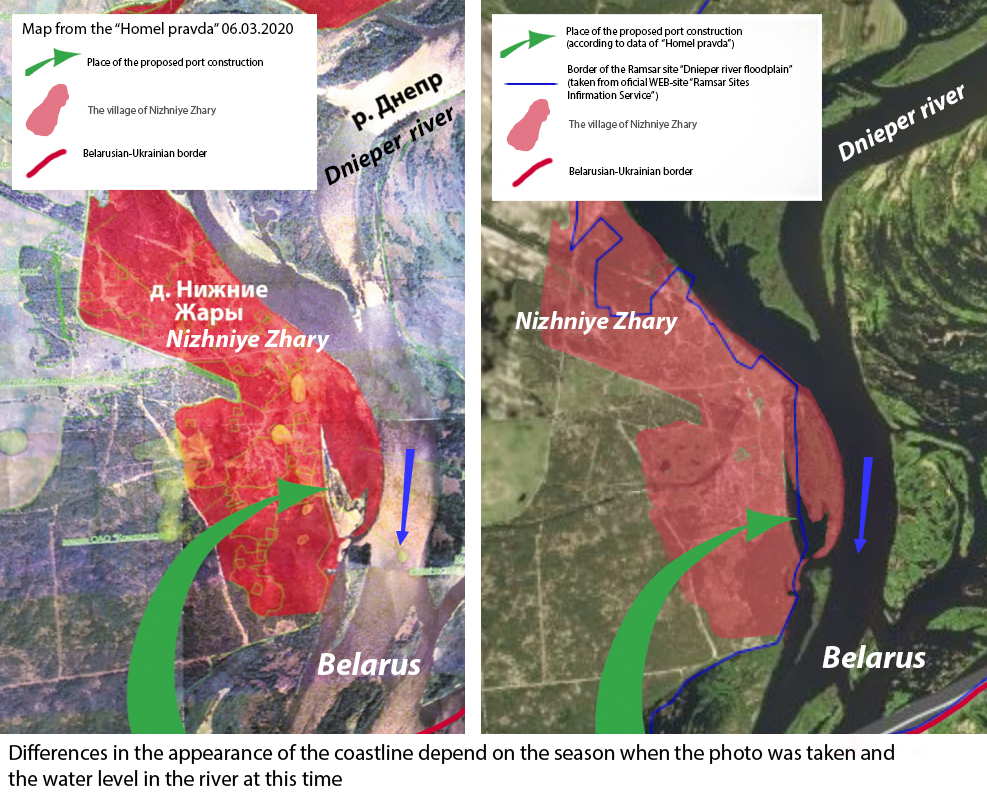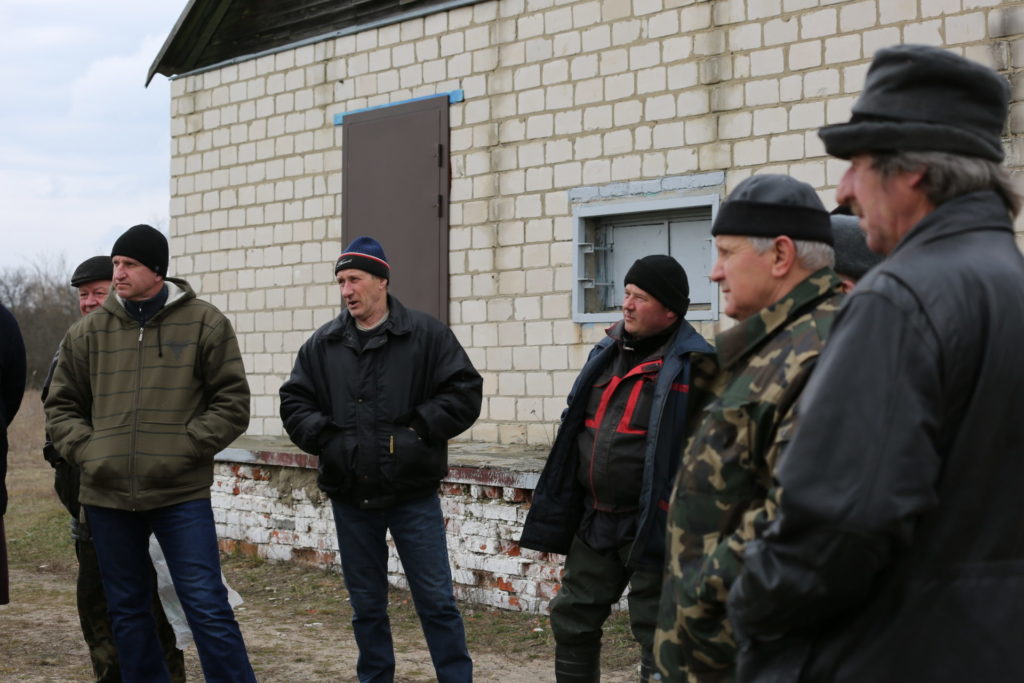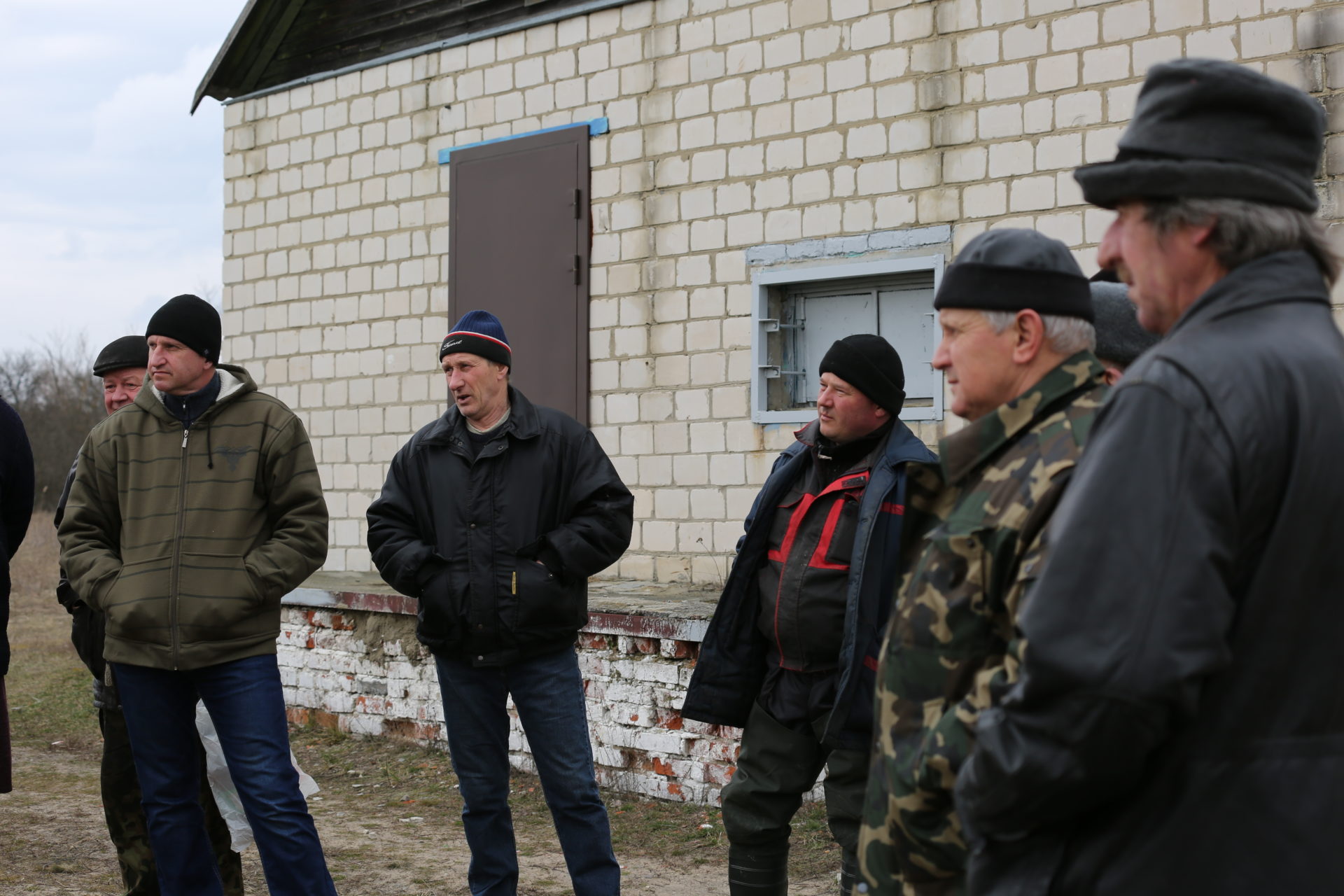The government of Belarus plans to construct a river port in the Belarusian village Nijniye Zary as an infrastructure for the proposed E40 waterway. This would destroy not only conservation areas of international importance, but also local livelihoods as their houses would be demolished. At the end of February, the Belarusian environmental organizations APB-BirdLife Belarus and Bahna organized a press tour for national journalists to visit the area and interview local residents about their opinion on constructing a port in their village.
Nijniye Zary is the southernmost village of Belarus and lies within the banks of the Dnieper river. It is located in the immediate vicinity of the border to Ukraine. Here, nature and wildlife flourish: surrounding forests are full of mushrooms and berries, and the river is full of fish. The area is popular for recreational activities among locals and visitors from all over Belarus.
Constructing the river port would transform 68 hectares of the area. As a comparison, the river port in Gomel (Belarus) has only a size of seven hectares. The government further aims to construct more objects, such as a yacht club, on additional 250 hectares. Another 120 hectares are proposed for the installation of solar energy panels. In total, it is assumed that 438 hectares would be converted into infrastructure for the waterway. The public is not transparently informed about those plans.

Locals against the river port
What do the locals of Nijniye Zary think about the construction of a river port in their village? The interviews as part of the press tour were very emotional. So far, national authorities did not inform the locals living in the area about their plans. No documents on the project have been shared with local residents, despite their numerous requests. And even though the investor “Belport Nijniye Zary” LLC has a new office room at the local medical post, there was never anybody present. The villagers of Nijniye Zary only know, that they will be abandoned from the land they lived on for many generations if the port is to be built. 47 of the roughly 100 houses in the village would be demolished. Property evaluators already came to the village, but they did not explain the villagers, which houses are planned to be demolished. Locals were outraged.
Vladimir, a fisherman from the Buda-Koshelevsky district, who comes almost every weekend to Nijniye Zary, says: ‘… now the Dnieper will be killed. There will be nothing for people here, they ‘ll just be thrown out of here.’
The 83 years old local resident Fedor agrees with him: ‘Leave us in our homes. There is enough land here, and do not touch us, the civilian population. Let the old people spend the rest of their lives in their nests!’
Local residents are also afraid of the potential contamination with radioactivity. The village of Nijniye Zary is on a relatively clean site in terms of radioactivity, but dredging downstream of the Dnieper river and in the Kiev reservoir could disturb and thus distribute contaminated sediments. People are also aware of the disastrous impacts on the environment from the proposed construction. They all agree that with the construction of the port, the beautiful Dnieper river and its surrounding nature would inevitably die.
At the end of the meeting, 50 local residents and visiting fishermen signed an appeal against the construction of the port. The letter has already been delivered to the presidential administration, but there has not been any reaction so far.

Key biodiversity areas at risk
Just behind the village begins the Ramsar site ‘Dnieper River Floodplain’, which leads north along the river. In addition, the territory is designated as Emerald Network site. This wetland is a haven for many species of birds and plants, is of great importance to their conservation and should be protected under international agreements. According to the map published in the Belarusian state newspaper ‘Gomel Pravda’, the area of the proposed port is partly located within this Ramsar site. If construction starts, many species of birds and fish would disappear. For any construction works within a radius of two km from the border of a Ramsar site, an Environmental Impact Assessment has to be conducted. However, this has not been carried out yet. APB-BirdLife Belarus and Bahna informed the national Ministry of Environment as well as the Ministry of transport about this legal requirement.
Unjustifiable high costs
According to preliminary calculations, the construction of the port would cost at least $64 million. Around the same amount of money would be needed for the solar panels. In order to deliver cargo to the port, a nearly 100-km long railway from Nijniye Zary to Hoyniki would need to be constructed. This would cost at least extra $100 million. A Turkish company is ready to become the investor of this huge project. They are interested in transporting the products of the Mosyr oil refinery, wood, building materials and fertilizers along the proposed E40 route.
Further information
Article from APB Birdlife Belarus
Article in the svaboda newspaper
Article on Belarus News24
Article and video from the Green Network Society
Video ‘What people from Polesia think about the E40 waterway’

